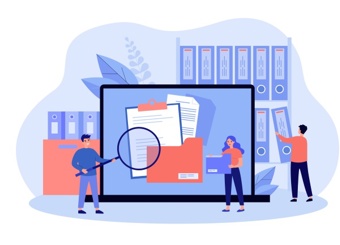What is an ideal Source-To-Settle workflow?
Source-to-settle integrates the essential processes of sourcing and payables. Various stages in the source-to-settle process include requisitioning, sourcing, generating purchase orders, and receiving and paying invoices - and all the possibilities that may arise in between.
As a result, seamless collaboration between procurement and accounts payable should establish an ideal source-to-settle workflow. Visibility, transparency, and efficiency are crucial to remaining productive and compliant.
Cloud automation provides a secure environment for collaboration from any location at any time. With financial updates and reporting in real-time, procurement and AP emerge from the back office to provide crucial insights that impact the bottom line.
Why should we do source-to-settle?
Companies often do source-to-settle when searching for and qualifying new vendors to diversify their internal database. Strategic sourcing identifies potential vendors and reveals the terms to find the best choices. Then contract management, analysis, and supplier management get suppliers on board to start building relationships.
Well-prepared businesses need to quickly identify and qualify new vendors in an international marketplace subject to global events. As a result, adopting a seamless source-to-settle process prevents business interruptions, reduces fraud and risk, and ensures production.
Automation integrates current processes with customized workflows to provide transparency and visibility into supplier selection. Real-time data puts crucial information at your team’s fingertips to make informed decisions about suppliers to remain competitive and profitable throughout any circumstances.
What is the difference between source-to-settle and procure-to-pay?
While source-to-settle and procure-to-pay have similarities, there are some critical differences. The procure-to-pay process starts with the requisition of goods or services and ends with payments issued to the suppliers. Typically, this process is used when companies already have a solid relationship with their suppliers.
Source-to-pay adds strategic sourcing to the process to select suppliers more thoughtfully based on pricing, timing, and policies. Comparing terms helps procurement select the best possible sources for raw materials, regardless of current market conditions. Automation provides a secure and collaborative environment with real-time updates to fuel fast choices when it matters the most.
Source-to-settle is a more closely integrated spend management solution often used to qualify and select new suppliers. The source-to-settle workflow includes:
- Strategic sourcing - what is the company looking for in potential suppliers?
- Contract management - are the terms of the agreement acceptable?
- Requisitioning - are the requisitions approved to purchase inventory?
- Purchasing - is there a purchase order, goods receipt, and was supplier performance reviewed?
- Payment - are the invoices reconciled and paid?
- Analysis - was the source-to-settle process captured for future analysis?
- Supplier management - is the internal supplier database adequately maintained and updated?
Automation simplifies these processes by eliminating tedious and error-prone manual tasks, creating an ideal source-to-settle workflow. Also, automation makes it easy to verify supplier compliance.
Examine source-to-settle workflows
Source-to-settle is a mindful process driven by data and educated decisions. Automation provides the latest data and reports to analyze workflows for pain points and inefficiencies. Eliminating bottlenecks ensures production continues uninterrupted.
Additionally, it is often crucial to find suppliers quickly to avoid business interruptions in a fast-paced global environment. Automation supports remote work, so the team continues to collaborate in real-time and make critical choices that impact productivity and the bottom line.
Streamlined workflows eliminate time-consuming manual tasks. For example, onboarding suppliers once took weeks or months to complete. With automation, onboarding takes just hours or days to accomplish for greater agility and flexibility.
Establish your ideal workflow
Automation is the most effective way to establish the perfect workflow with the source-to-settle steps in mind. Real-time data brings procurement and accounts payable together to make important supplier selection and management decisions.
Additionally, a secure cloud environment provides the highest transparency and visibility into the source-to-settle workflow. Immediate access to financial reports helps the team detect inconsistencies and potential fraud before they become significant problems.
Organizations benefit from implementing automation and realize a measurable ROI. The right suppliers are the basis for production. Anything less than a thoughtful process based on accurate data could lead to disruption of supplier relationships, business interruptions, and financial losses.
Establishing the ideal source-to-settle workflow brings the procurement and AP departments together to make critical financial decisions that impact the entire organization. In addition, the right partner helps companies eliminate business interruptions and achieve their production goals.





